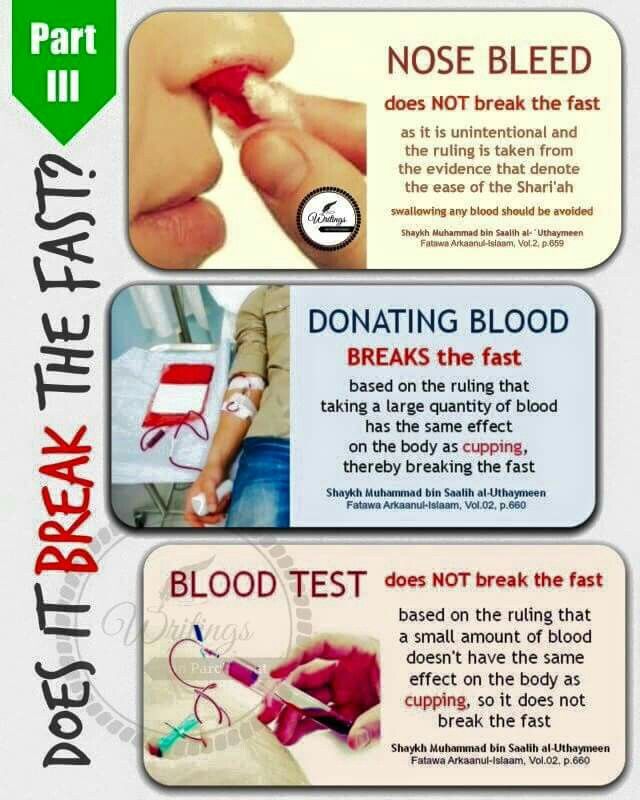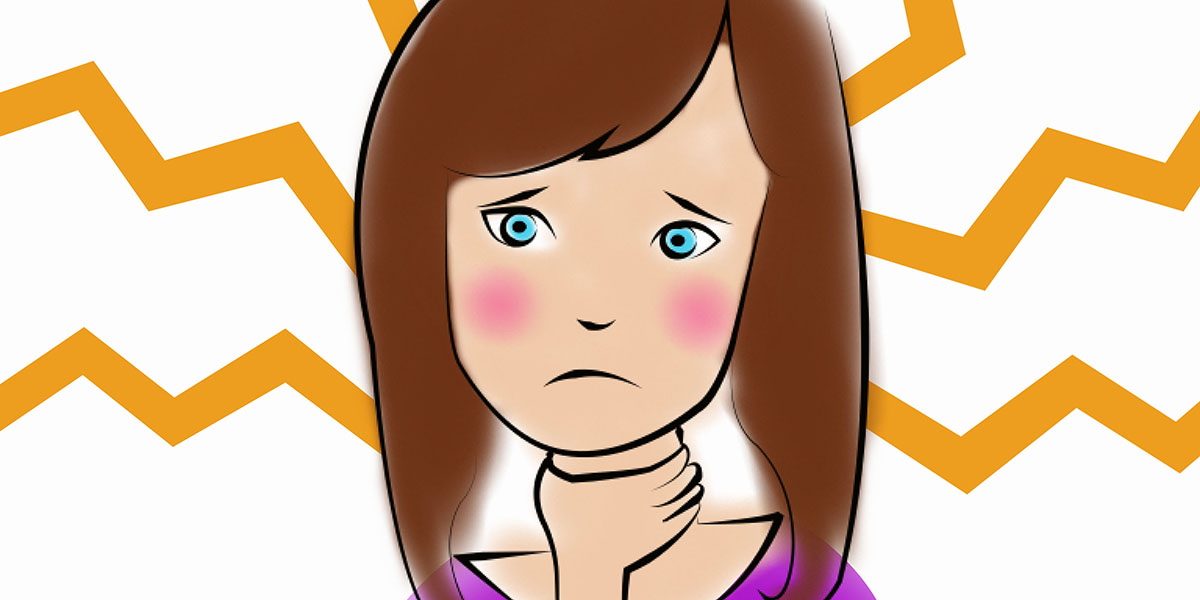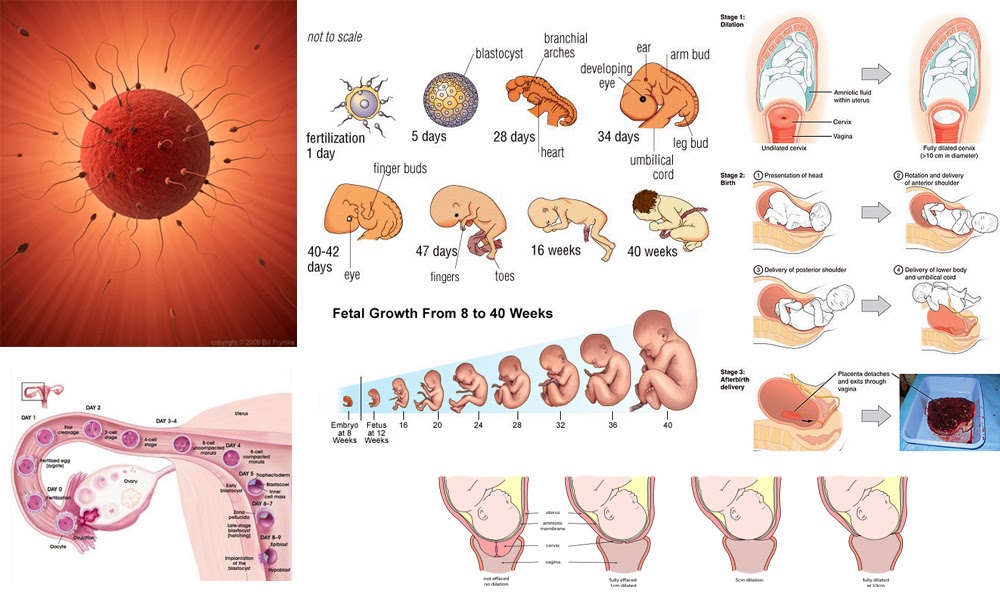Giving birth human
Woman giving birth: Live birth video
Narrator: Samiyyah is the owner of a day spa in Philadelphia. She is 38 weeks pregnant with her second child.
Samiyyah: With the first pregnancy, I delivered in a hospital, and it was very restricting, you know, being confined to the bed, not being able to, you know, move when I felt my body wanted me to do certain things.
Narrator: For her son Safi's birth, she was given pitocin to speed up labor, an epidural for pain management, and an episiotomy (a surgical cut to widen the vaginal opening).
This time, she's planning a natural delivery -- without pain medication and other medical interventions -- at a birth center.
Samiyyah: Yes, I've been told that I am completely crazy for being, you know, for not having the drugs, but I've been there and I didn't like it, so I figured I would try this. It's healthier for the baby; it's healthier for me. So why not? I mean, women, we were designed to do this.
Narrator: Seven days after her due date, Samiyyah's labor kicks into gear. At the birth center in Bryn Mawr, Pennsylvania, Julia Rasch, a licensed nurse/midwife, performs an internal exam and starts an IV line to give Samiyyah a dose of antibiotics, since she's positive for Group B strep.
Samiyyah is 3 centimeters dilated, 100 percent effaced, and her water hasn't broken yet, which is common in the first stage of labor.
Birth centers offer a more relaxed and intimate alternative to hospitals for women expecting uncomplicated births.
It's important to choose a birth center with nearby hospital privileges in case of an emergency.
Helping her through her first natural birth is her husband, Arvan. Her mother-in-law, Irena, and 6-year-old son Safi are there for support.
Samiyyah: We've talked about, you know, what he's gonna see, we've shown him pictures, and I think he'll be okay.
Narrator: As Samiyyah's labor progresses, her baby's heart rate is monitored every 15 minutes.
Samiyyah: My goal is to remain calm and try to stay level-headed.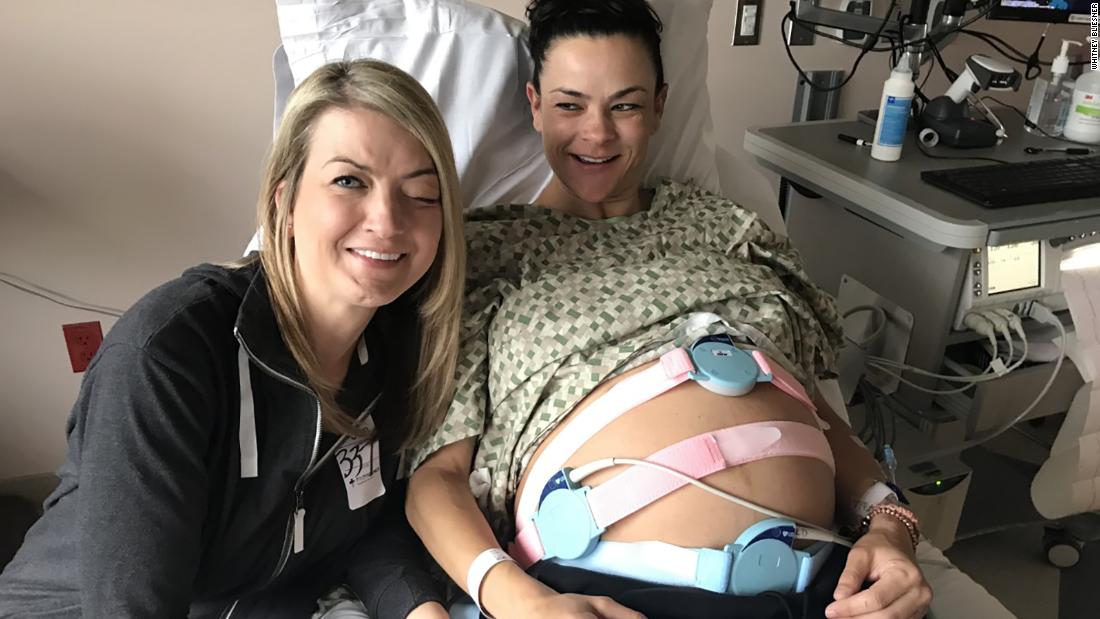
Narrator: As her contractions pick up, she starts experiencing painful back labor, typically caused by the baby's head pressing against the lower spine.
Samiyyah finds some relief by trying a combination of slow steady breathing, constant deep massaging and counterpressure, spending lots of time in a heated Jacuzzi, and trying different labor positions.
Arvan: She's doing great. She's doing great. She's really pushing through.
Narrator: Her midwife feels it's time to break her water with an amni hook, since she can feel the amniotic sac bulging. This is a common procedure and usually helps speed up the labor process.
Samiyyah: I thought it would be painful, but it wasn't at all. Actually it was like a relief of pressure.
Midwife Julia Rasch: Large amount of clear fluid. Beautiful.
Narrator: Her contractions now intensify as she starts to feel the urge to push. This is called hard labor or transition. The muscles your body uses to contract are transitioning from dilating the cervix to pushing the baby down and out.
Midwife: The intensity of the contractions is increasing, and just a certain force is now really behind that baby coming.
Narrator: Transition can be the most painful part of labor -- but usually the shortest phase.
Narrator: Though most mothers dilate nearly 8 to 10 centimeters before transitioning, Samiyyah is only 5 centimeters dilated and is having trouble resisting the urge to push.
Arvan: Sam, do not push. Fight it. Fight it.
Samiyyah: I'm trying!
Narrator: Her midwife agrees her body is ready to deliver. Pushing before being fully dilated is uncommon. This is why each caregiver has to manage her patient's labor on an individual basis.
Midwife: Okay now, take a breath and do it again.
Narrator: Her midwife uses her fingers to pull back her cervical opening as Samiyyah pushes.
The midwife made the right decision, listening to her body. With just 11 minutes of pushing, Arvan and Samiyyah's baby emerges.
Samiyyah: [screams]
Arvan: Good job! Good job!
Midwife: There's your baby!
Narrator: Sami Sarrajj, a healthy boy, is placed immediately on his mother's chest.
Midwife: You did it! You did it!
Narrator: Dad cuts the umbilical cord, and the midwife collects some of the cord blood for routine testing.
It's not over yet. The midwife helps deliver the placenta, and a nurse presses on the fundus -- the upper part of the uterus -- to check how much the uterus has contracted.
Applying pressure is a common practice used by caregivers to help expel excess blood.
Samiyyah tore along her previous episiotomy line, and her midwife repairs it with stitches, which takes 15 minutes to complete.
Arvan: You did a hell of a job... Yeah!
Narrator: Samiyyah is now breastfeeding and bonding with her baby. Incredibly, in an hour, she is showered up and savoring some well-deserved fettucini Alfredo.
It was a fast delivery, with just four hours and 11 minutes of labor. Samiyyah's natural birth is a success, and she's ready to try it again.
Samiyyah: One more. We're going to try for a girl. (laughs)
Narrator: Everyone played a supportive part on the birth team… Even big brother Safi got to announce the news that his brother was born.
What happens to your body during childbirth
Childbirth is challenging and complications occur, but women's bodies are designed to give birth. The shape of the pelvis, hormones, powerful muscles and more all work together to help you bring your baby into the world - before, during and after childbirth.
How your body prepares for labour
Here are some of the ways your body will prepare both you and your baby for the birth ahead.
Braxton Hicks contractions
In the weeks or days before you start having proper contractions, you may experience Braxton Hicks contractions. This is your uterus tightening then relaxing. These contractions don't usually hurt and are thought to help your uterus and cervix get ready for labour.
Braxton Hicks contractions may become more regular as you get closer to the time of birth, but unlike labour contractions, they don't change the shape of the cervix and are sometimes referred to as 'false labour'. Your midwife can tell you if you're experiencing Braxton Hicks contractions or if you are in labour by doing a vaginal examination to look at your cervix.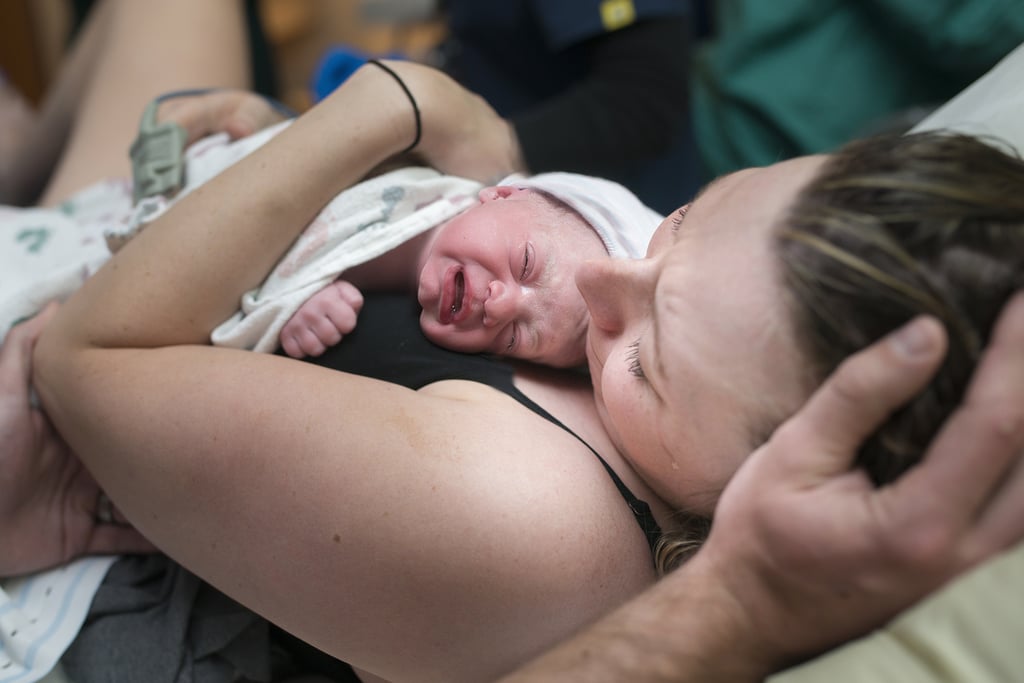
Changes to the cervix
As labour gets closer, your cervix softens and becomes thinner, getting ready for the dilation (widening) that will allow the baby to enter the vagina. You may also see a 'show', which is a pinkish plug of mucus, stained with blood.
Engagement
Your baby may move further down your pelvis as the head engages, or sits in place over your cervix, ready for the birth. Some women feel they have more room to breathe after the baby has moved down. This is called 'lightening'.
Rupture of the membranes, or 'waters breaking'
Some women find the sac of amniotic fluid containing the baby breaks before labour, contractions start and the fluid runs (or gushes) out of the vagina. This is referred to as rupture of the membranes, or 'waters breaking'.
Let your maternity team know when your waters have broken and take notice of the colour of the fluid. It is usually light yellow. If it is green or red, tell your maternity team since this could mean the baby is having problems.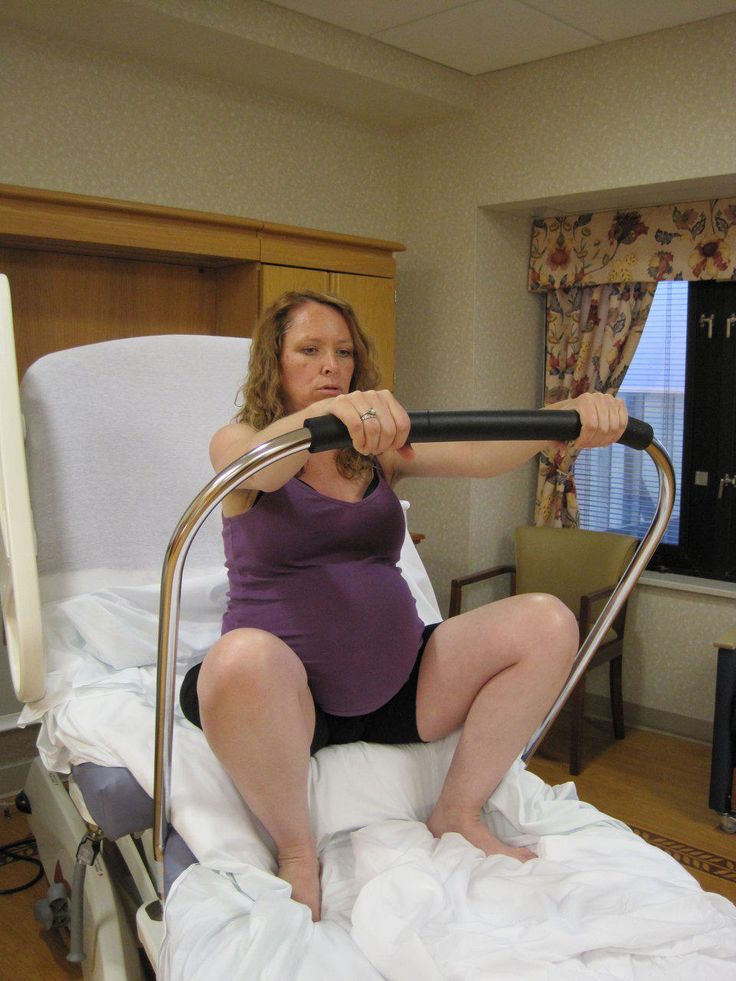
If your waters have broken but you have not started having regular contractions within 24 hours, you may need your labour to be induced because there is a risk of infection. Your midwife or doctor will talk to you about this.
How will you know when labour has started?
Movies often show women suddenly being struck by painful contractions and rushing to hospital. In real life, many women are not sure if they have actually started their labour.
You may feel restless, have back pain or period-like pain, or stomach disturbances such as diarrhoea.
Labour officially begins with contractions, which start working to open up the cervix. You should phone your midwife when your contractions start, although you probably won't be encouraged to come to the hospital or birthing centre until your contractions are closer together.
In preparation for labour, your baby may move further down your pelvis as the head engages, or sits in place over your cervix.How the pelvis is designed for childbirth
Your pelvis is located between your hip bones. Women typically have wider, flatter pelvises than men, as well as a wider pelvic cavity (hole) to allow a baby to pass through.
Women typically have wider, flatter pelvises than men, as well as a wider pelvic cavity (hole) to allow a baby to pass through.
The organs sitting in a woman's pelvis include the uterus, cervix and vagina, which are held together by a group of muscles. During childbirth, the muscles at the top of your uterus press down on the baby's bottom. Your baby's head then presses on your cervix which, along with the release of the hormone oxytocin (see 'How hormones help you give birth', below), brings on contractions. Your cervix should dilate so your baby can pass through it.
Your pelvis has bones and ligaments that move or stretch as the baby travels into the vagina. Your baby also has spaces between the skull bones called 'sutures', and the gaps where the sutures meet on the skull are called fontanelles. This allows for the baby's head to mould as the skull bones meet or overlap, allowing it to fit more easily as it travels through your pelvis.
How hormones help you give birth
Your body produces hormones that trigger changes in your body before, during and after childbirth.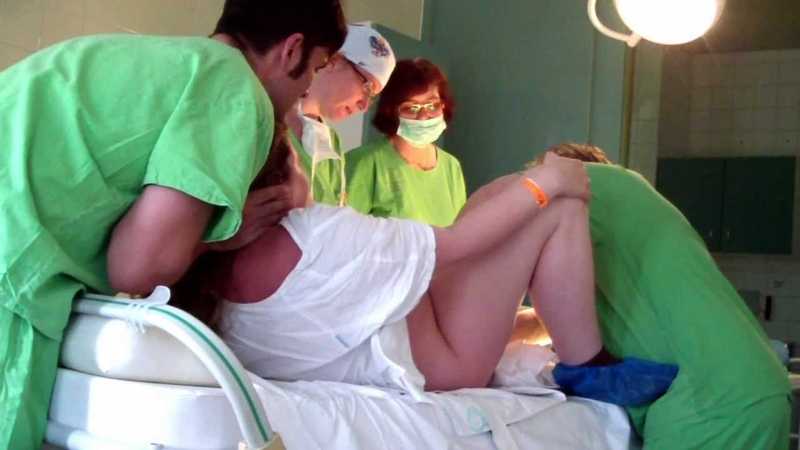 Here's how they work to help you deliver your baby.
Here's how they work to help you deliver your baby.
- Prostaglandin Before childbirth, a higher level of prostaglandin will help open the cervix and make your body more receptive to another important hormone, oxytocin.
- Oxytocin This hormone causes contractions during labour, as well as the contractions that deliver the placenta after the baby is born. These post-birth contractions, including more that can occur during breastfeeding, help your uterus shrink back to its normal size. Oxytocin and prolactin are the two main hormones that produce and let down breast milk for your baby. Skin-to-skin contact between a mother and baby helps to release more of these hormones.
- Relaxin The hormone relaxin helps soften and stretch the cervix for birth, while helping your waters break and stretching the ligaments in your pelvis to allow the baby to come through.
- Beta-endorphins During childbirth, this type of endorphin helps with pain relief and can cause you to feel joyful or euphoric.

- 'Baby blues' After birth, your hormone balance can change again, and this is believed to cause the ‘baby blues’ in some women. You may feel teary, anxious and irritable and your mood can go up and down.
When childbirth doesn’t go to plan
Sometimes, complications can occur before or during childbirth that mean things don’t go as expected.
Sometimes, labour needs to be induced or started. There are a few ways to induce labour, including the mother being offered synthetic prostaglandin. This is inserted into the vagina to soften the cervix and start contractions.
If contractions slow down or stop during labour, the mother may be offered synthetic oxytocin from a drip to increase the contractions. In both these cases contractions can come on strongly and more pain relief may be needed. Your maternity team should explain the benefits and risks of this with you before you agree to it.
The baby could be in a posterior or breech position, not ideally placed above the cervix before the birth. Your maternity team may need to use forceps or a vacuum to help turn the baby or help the baby travel out of the vagina. Sometimes a caesarean is needed.
Your maternity team may need to use forceps or a vacuum to help turn the baby or help the baby travel out of the vagina. Sometimes a caesarean is needed.
In rare cases, a mother may experience cephalopelvic disproportion (CPD), which is when the baby’s head is too big to fit through the pelvis. A diagnosis of CPD is usually made when labour hasn’t progressed and synthetic oxytocin has not helped. A caesarean is usually the next step.
More information
If you have any questions about childbirth or pregnancy, you can call Pregnancy, Birth and Baby on 1800 882 436, 7 days a week, to speak to a maternal health nurse.
Learn more here about the development and quality assurance of healthdirect content.
What is the birth of a person in the Christian sense?
Maxim, Omsk
August 1, 2019
Faith and unbelief #Philosophical questions
How to understand what is the birth of a person in the Christian sense? How to understand that a person is made of nothing? Why are we the way we are and not others?
Good luck! In itself, the birth of a person into the world is a joy, because. one more soul, created by God, has the opportunity to inherit the Kingdom of Heaven, doing His Will, receiving joy from the Gifts given to all of us: the Sun and rain, light and darkness, flowers, animals and insects, abundance and abstinence. So is the mother after the labors of giving birth " does not remember sorrow for joy, because a man was born into the world " (John 16.21).
It is said about spiritual birth: “ Whoever believes and is baptized will be saved ” (Mark 16.16). “ Truly I say to you, unless one is born of water and the Spirit, he cannot enter the Kingdom of Heaven ” (See John, 3.3-21). Probably, being born in Christ can be considered a willingness to live for Him. In the order of Baptism, the person himself consciously or, in the case of the baptism of an infant, through godparents (who promise God that they will raise a worthy Christian out of a little man) vows to renounce the service of Satan (i.e., "the enemy of God"), with all his passions and sinful charms, and turn to Christ with all your soul and thoughts. A new person arises, whose childishly pure soul is striving to serve God's Will.
A new person arises, whose childishly pure soul is striving to serve God's Will.
There are many theories in the arguments of mankind about the origin of the Universe, but the main ones in our time are considered to be evolutionism, which speaks of the constant growth of the quality of everything (contrary to the 2nd law of thermodynamics), and creationism, which implies the presence of the Creator, the Creator of the whole world “out of nothing” , because before the act of creation, there was only He. The Bible speaks of "creation," as they say, from the very beginning. "In the beginning God created the heavens and the earth." And created through the "Word". God said everything appeared. In the creation "ex nihilo" God creates freely, gives rise to everything by a pure act of will, a good will. Everything is given life as a selfless gift. Therefore, creation is positive, for it is indebted to the good will.
Said:
And the Lord God formed man of the dust of the ground, and breathed into his nostrils the breath of life, and man became a living soul (Genesis 2:7).
![]()
Man is created by God on the sixth day of Creation, according to the text - from some semi-finished product. Whether it was just clay or some kind of creature into which the Lord breathed His breath, different fathers explain in different ways. If you're asking a question, I think it's really important to you, but I think the most significant thing about the creation of man is that " God created man in His own image ” (Gen. 1.26-31). My advice to you: take the trouble to find and read the interpretations of the book of Genesis of the Church Fathers, Saints Basil the Great and John Chrysostom , later Orthodox interpreters of Holy Scripture. In the creations of each of them you will find precious pearls.
The third question is not entirely clear. If you mean our bodily organization - with one head and a liver-spleen and double arms and legs, eyes and kidneys, then, probably, the Lord considered that it would be better.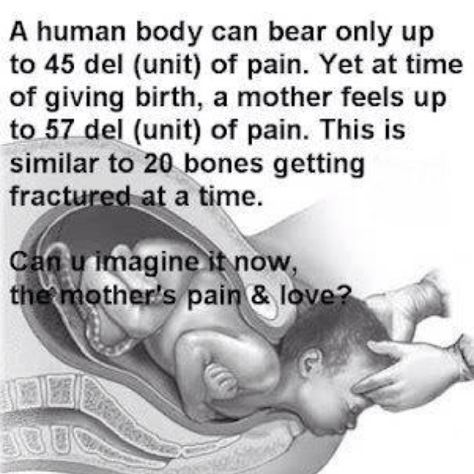 If we mean “internal” dispensation, then even taking into account some predetermining initial factors (family religiosity, genetics, geography, etc.), to a greater extent, what we are is influenced by our own desire and diligence, ability and the will to learn; to be Christians, and not only in name; just be good people.
If we mean “internal” dispensation, then even taking into account some predetermining initial factors (family religiosity, genetics, geography, etc.), to a greater extent, what we are is influenced by our own desire and diligence, ability and the will to learn; to be Christians, and not only in name; just be good people.
Even God will not force us “into heaven”, and Satan himself will not force us “into hell”. The choice of actions and the very arrangement of life is ours.
God help! Read, pray, try to know the Will of God!
Summary Gorky The Birth of Man for the reader's diary, read a brief retelling online
In 1892, during a terrible hunger strike, thousands of people broke away from their homes and, in search of a better life, went to the Caucasus. Among these suffering and restless people, the writer also moved. People who came here from the devastated Oryol lands were amazed at the fertile fertility of the Caucasian region.
When the writer was refreshing himself on the seashore with honey, the peasants with whom he worked passed by him. Among them was one woman who remembered him for her singing.
Among them was one woman who remembered him for her singing.
Having had a snack, the writer gathered his things and went after the people who passed by. As he passed by dense thickets, he heard a human groan. He came closer, parted the bushes, and saw the same Oryol singer-songwriter, who was rushing about on the ground in labor pains. The writer realized that the woman was about to give birth, he got scared and rushed away. But then the mother screamed so hard that he returned again to help. The woman giving birth was ashamed in front of a strange man, and she began to drive him away from herself. Ignoring her cries, the writer washed his hands in the sea, and began to take birth, remembering all his knowledge in this matter.
The amniotic fluid had already broken, and soon the baby was born. The writer did not have a knife, and he had to gnaw through the umbilical cord with his teeth. The woman had a rope prepared in her pocket, with which the umbilical cord was tied.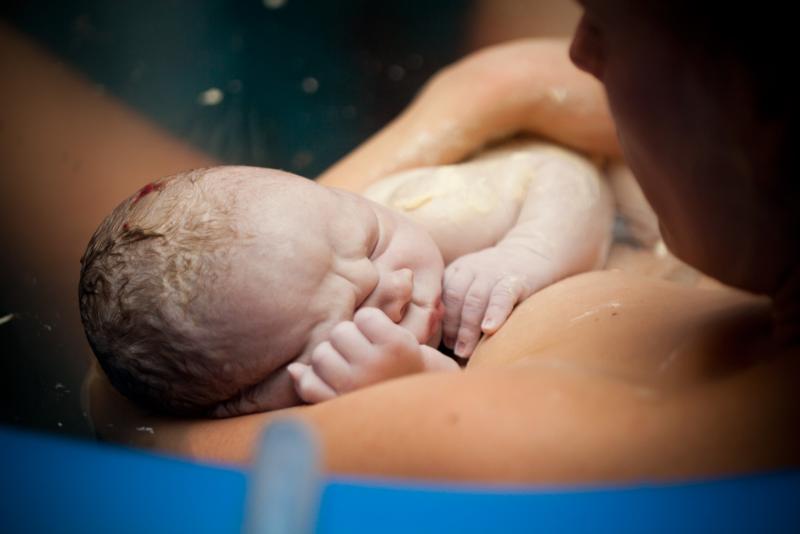 Having said that the woman in labor should put herself in order, the newly-made obstetrician carried the loudly screaming baby to the sea, to bathe. When he returned, the mother was looking for a place to bury the afterbirth. Having given the child to his mother for feeding, the writer buried the bundle deep in the ground.
Having said that the woman in labor should put herself in order, the newly-made obstetrician carried the loudly screaming baby to the sea, to bathe. When he returned, the mother was looking for a place to bury the afterbirth. Having given the child to his mother for feeding, the writer buried the bundle deep in the ground.
To restore the strength of the woman in labor, he boiled a kettle and fed her. The baby, sucking on milk, was fast asleep under a bush. After a short rest, the travelers again set off on the road. The writer carried the child, and the woman walked, holding on to his shoulder.
The story teaches not to be afraid, compassion and help.
Rate the work:
- 2.65
- 1
- 2
- 3
- 4
- 5
Votes: 54
Read the summary Birth of man. Brief summary. For a reader's diary, take 5-6 sentences
Gorky. Brief contents of works
- In humans
- Barbarians
- Vassa Zheleznova
- Song about the Petrel
- Song about Falcon
- About Ivanushka-Durachka
- Human Birth
- Samovar
- Tales about Italy
- Old
- 9005
- Chelkash
Picture or drawing The birth of a person
Other retellings and reviews for the reader's diary
- Summary Ilya Ehrenburg Thaw
In one of the largest industrial cities of that time, there was a club full of people.
 All those present discussed and talked about the novel of an aspiring author in their city. All these people who discussed this novel were very fond of it.
All those present discussed and talked about the novel of an aspiring author in their city. All these people who discussed this novel were very fond of it. - Summary Shukshin Borya
Borya's story tells about a harmless guy with mental retardation, who periodically ends up in a local hospital for displaying aggression towards his parents. Bori's mind is like that of a two-year-old child.
- Summary of Flaubert's Salammbo
During a feast in the gardens around the palace of Hamilcar in Carthage, warriors gathered, valiantly fighting for the honor of the state, but left without payment for their labors, since the treasury was ruined
- Summary Carousel Zoshchenko
The main character of the work is a village boy who came to the city for the May Day holidays.
- Nabokov
VV Nabokov is both a Russian and an American writer. He wrote in two languages: Russian and English. Also, this man is the famous son of the politician Vladimir Nabokov.

Learn more
